Photo by Sofia Mareque
Beneath the story of Whang-Od is the legacy of the Butbut people, an undertold story of indigenous power and what we can learn from them.
Last December, the Vogue Philippines team found themselves on another excursion, deep in the highlands of the Cordilleras in the remote village of Buscalan. From our office in Ortigas, we endured a soothing, yet turbulent 12-hour ride slouched in a van traversing Manila to Bulacan, Bulacan to the North Luzon Expressway, and the North Luzon Expressway to Cabanatuan. In a long-winded stopover at a provincial KFC, we gathered at a table, making small talk at close to midnight—the eve before a cover shoot that felt auspiciously historical for magazines and representation at large.
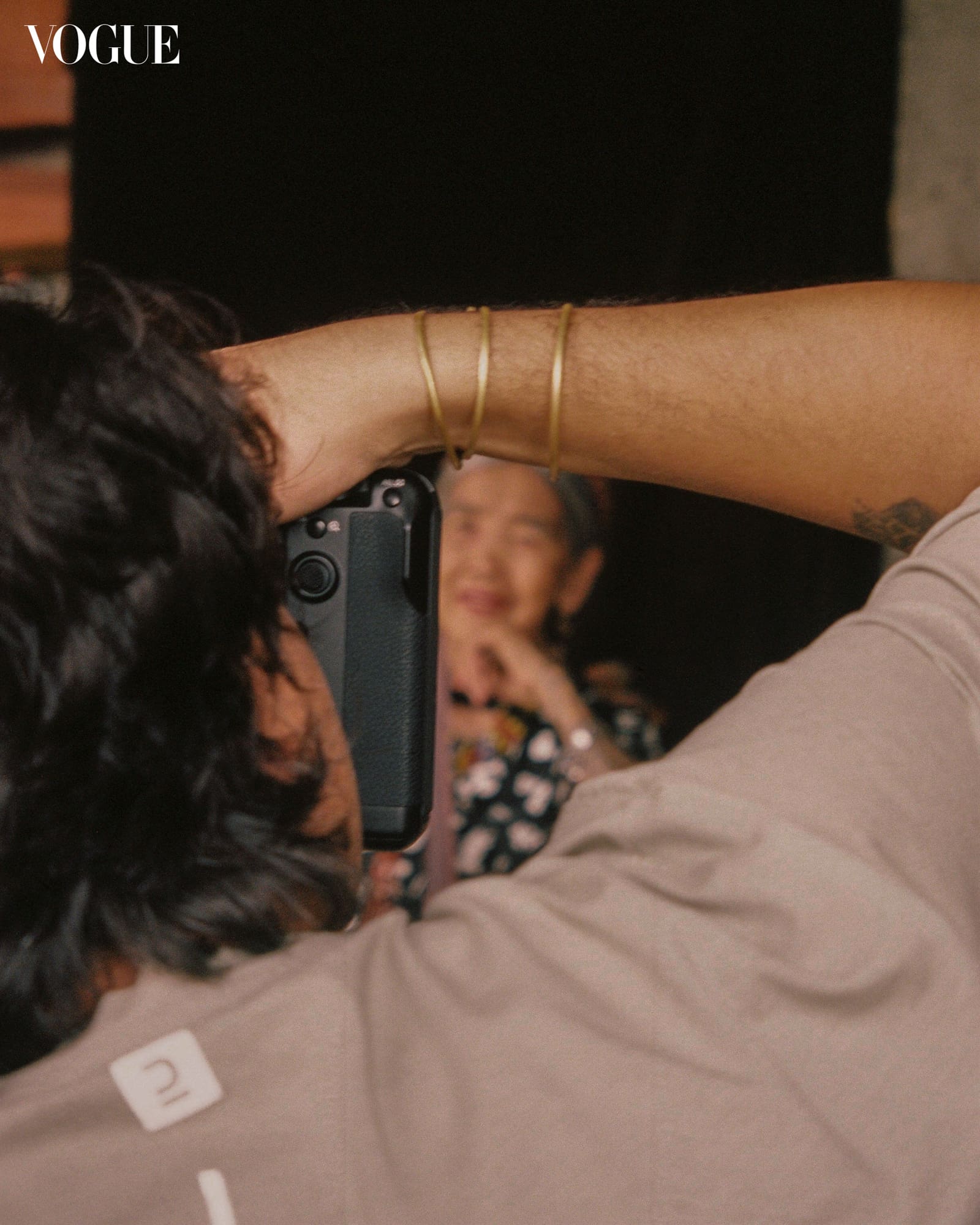
From the very conception of Vogue Philippines, our editorial team knew we wanted to feature Apo Whang-Od, the Butbut people’s oldest living thread connecting them to what was once a dying tradition, the batok tattoo. We had no idea that featuring her would lead to resounding virality. No idea she would trend on Twitter just a few hours after revealing our April issue. No idea she’d be breaking a record as the oldest person to ever appear on the cover of Vogue–and no idea that over a week later, Whang-Od would make it to Saturday Night Live’s Weekend Update.
Strange as it may be for a global fashion magazine legendary for the glamor of runway reporting, supermodels, and haute couture to feature a 106-year-old indigenous woman, dressed in however she pleased, highlighting her reverence and her tattoos, the mark of her identity. But beyond Whang-Od herself, we were simply pulled by the richness of the entire story: an account of indigenous people and their unassailable agency, the transformation of tradition, and what it illuminates about concepts of beauty.

Photography by Artu Nepomuceno
The batok tattoos were traditionally made to mark a Butbut member’s rite of passage, whether in war or in womanhood. With those requisites in mind, this would leave much of a mambabatok’s present-day clientele at an awkward position. But it would not be fair to focus the story of the resilience of Kalinga culture on questions of the foreigner alone, as the diversification of the batok tattoo’s recipients is not the only change observed. Now, there are more women mambabatok in a traditionally male practice, the new generation of mambabatok individually exploring different art styles on their own time, and more safeguards worked on by the people of Kalinga and the National Commission of Indigenous Peoples (NCIP) to ensure their culture and heritage evolve on their own terms.
Hours later, we awaken to a small, sleepy government office in Tabuk. Surrounded by native chickens and the faint smell of rain and mountain soil, our producers introduce our team to the NCIP Kalinga office. We’ve been in talks with the NCIP for several months since the conception of the story, but we make our purpose and our names known once again. Afterward, we drove up the zig-zagging road once again, to the municipality of Tinglayan.
At the base of the mountain, we met up with Gaspar, our guide, who would accompany us on the hike going up and for the rest of our stay in Buscalan. The hike up to the village has two routes, each varying in difficulty, terrain, duration, and view. One route finds you traversing the ledges of Kalinga’s rice terraces; and while it might take several minutes longer, the trek is mellow and scenic. But a broken sleep overnight in a turbulent van didn’t faze our curiosities from the hike’s alternative route; claimed to be much shorter, in exchange for a steeper trail, first descending and then ascending up the mountain.
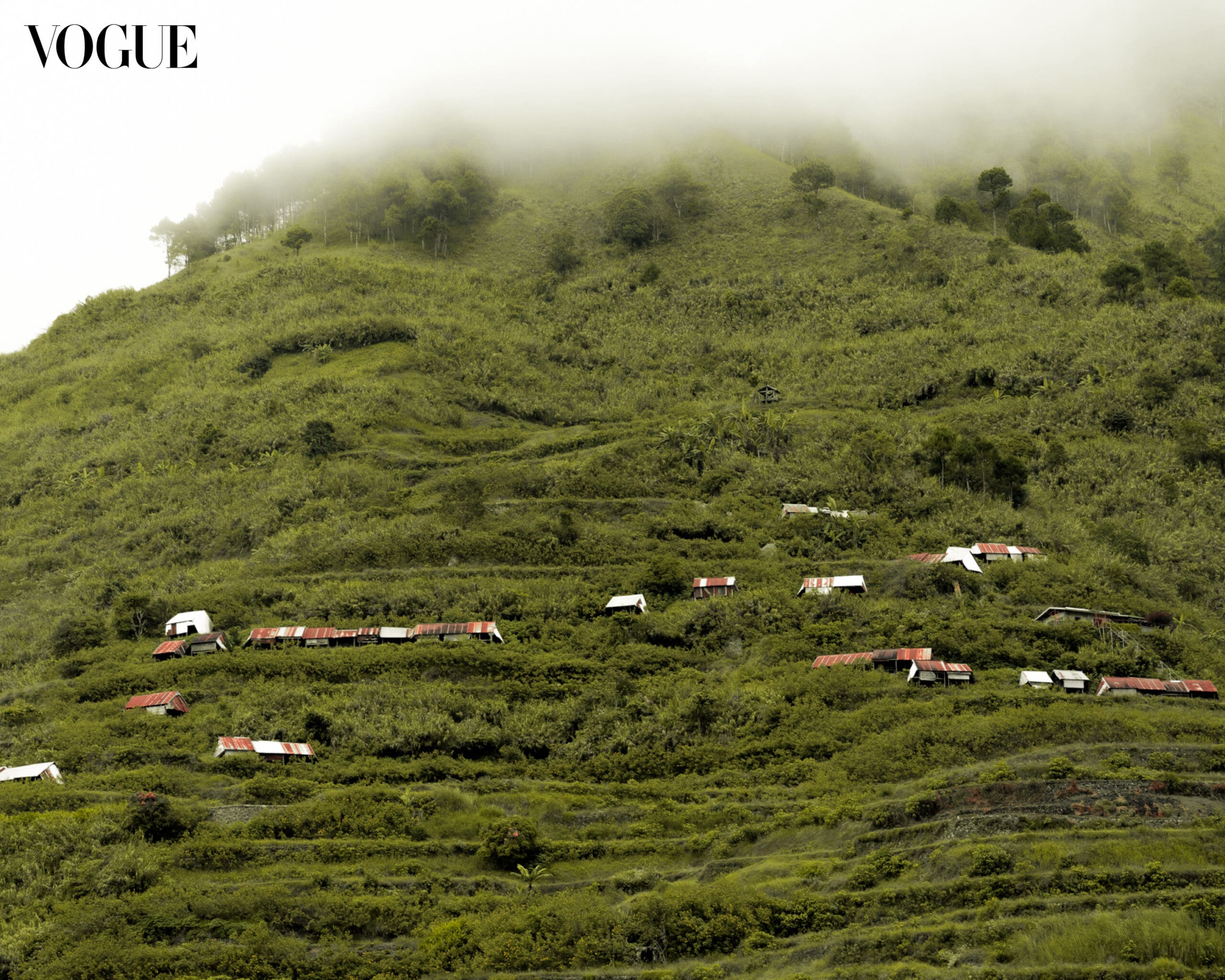
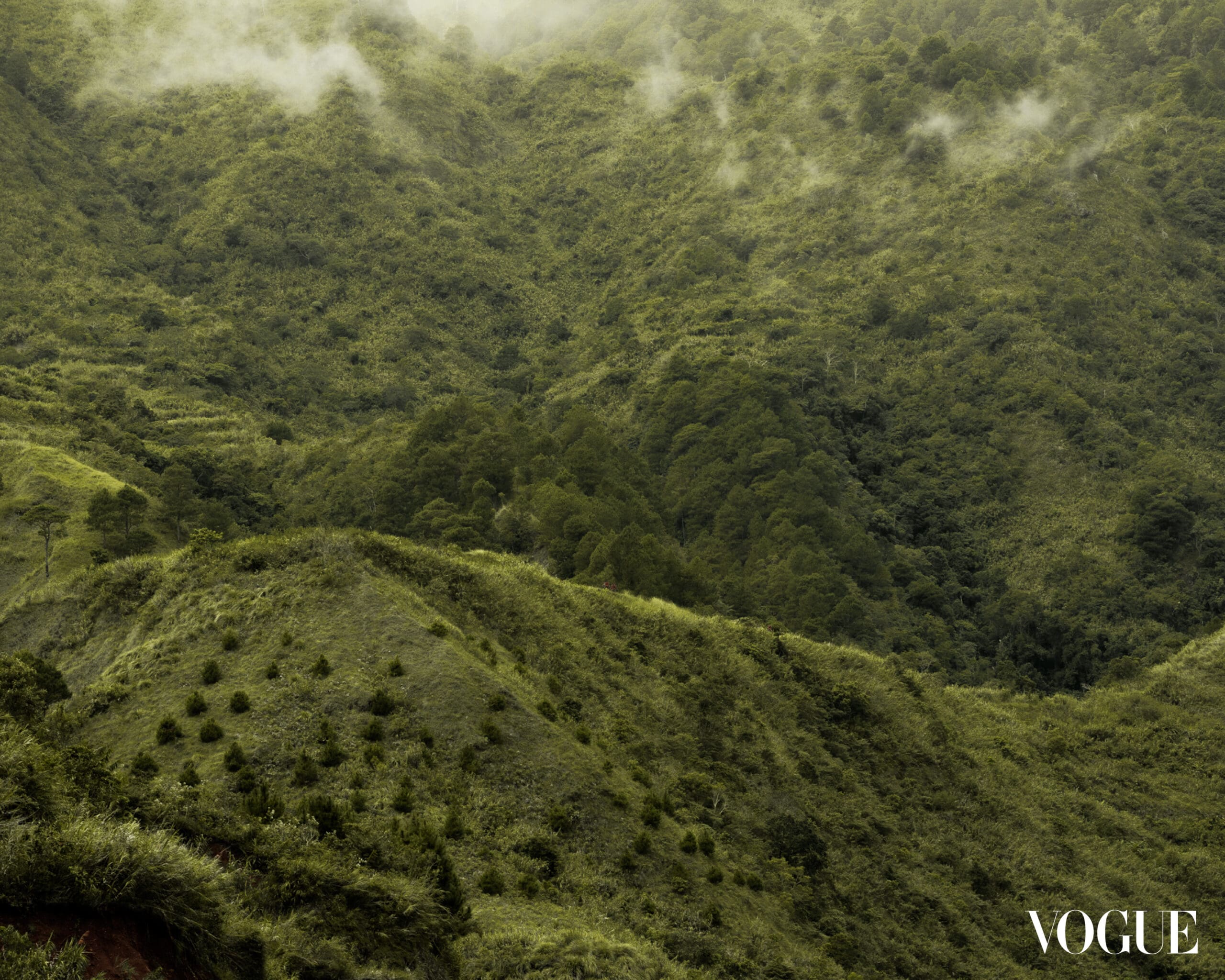
Several metal carts are suspended across the jump-off point to Buscalan. It’s a pulley system, I realize, to bring up loads of stock to the village. For just PHP50, we load our production equipment onto the carts and make our way up the rocky trail. And no, tourists can’t ride the cart.
We arrive at the steps of Buscalan. Home of the Butbut people, Buscalan is among the 20 barangays spread across Tinglayan. After registering our names as visitors, we were greeted by houses densely packed and situated across the mountainous village as we found our way to our homestay. During peak seasons, swathes of tourists often plan for a visit to Buscalan, but one of the NCIP personnel would share with me how the villagers of Buscalan have the power to reject and control the number of visitors as they wish—sometimes even denying entry to visitors who haven’t even reached the village yet.
Buscalan Tattoo Homestay, which Gaspar owns, was our home for the next two days. Cellular signal is zero, and WiFi is limited throughout much of the village. There are no hotels or swanky accommodations here, but this is among the many ways in which the Butbut maintain their autonomy and way of life despite the increased influx of visitors keen on meeting Apo Whang-Od, the oldest mambabatok of her generation and whose legacy is felt throughout Kalinga.

The Vogue team feast on a decadent spread of assorted fresh mangoes and papaya, fried galunggong, mountain rice, chicken afritada, and chop suey mixed with freshly harvested vegetables. Workers of the homestay serve us the much revered Kalinga coffee: an earthy robusta bean ground so finely it needs no strainer when brewed, usually with sugar, as the dense particles settle at the bottom of your cup, producing a smooth, chocolate-esque brew often served in large, piping hot flasks.
We make our way into Grace’s house, where our team would gingerly meet Apo Whang-Od herself. She arrived at our makeshift studio dressed in traditional Kalinga attire, a black tank top, and her chosen shade of red lipstick. After Audrey Carpio, our features editor, chatted with Grace and Whang-Od on a balcony overlooking Kalinga, Grace’s schedule cleared up. The Vogue team was excited to get tapped and be marked with the Butbut people’s ancient art.
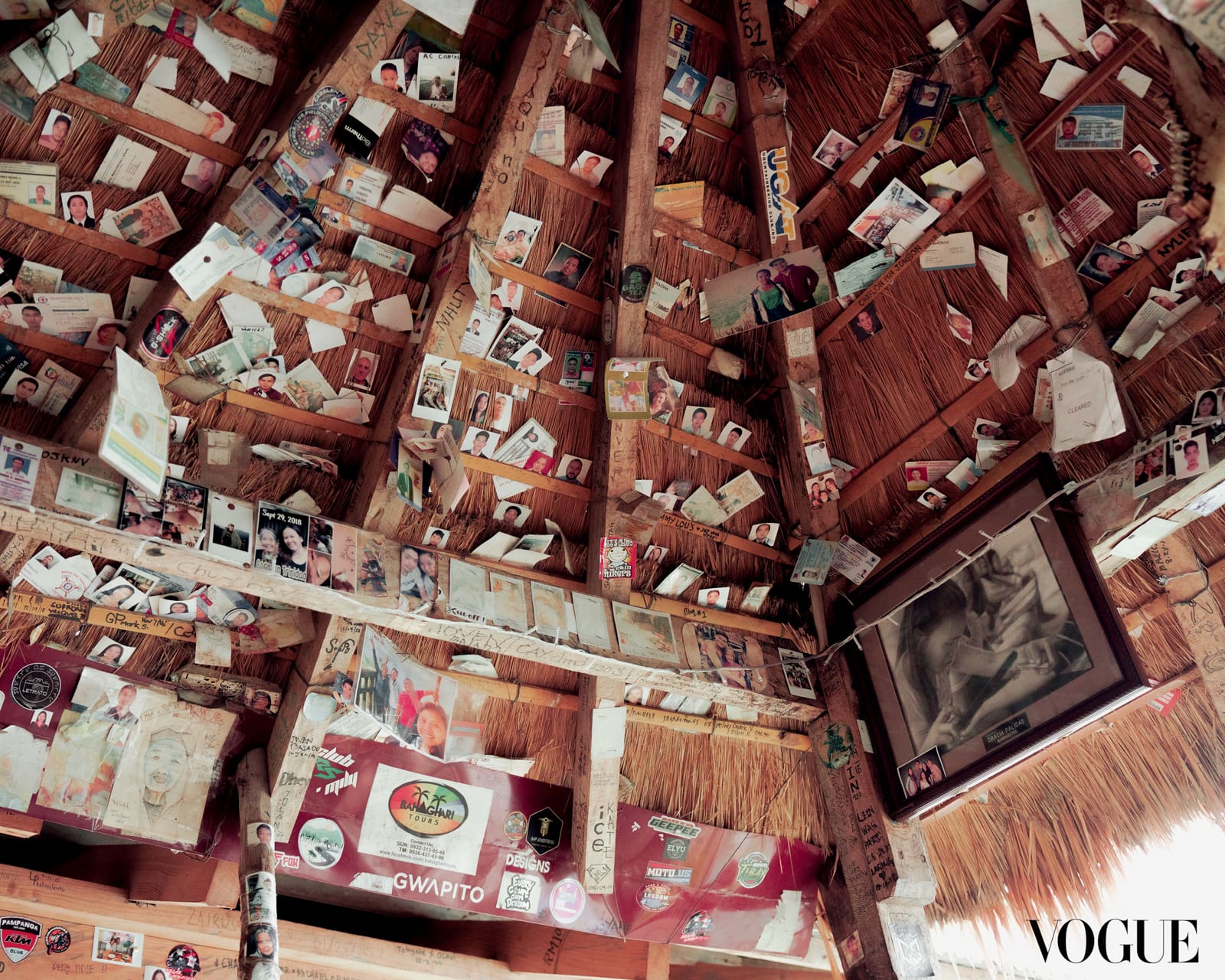
Photography by Artu Nepomuceno
Though still painful, I, along with other members of the team gladly endured the long minutes (or hours) of what felt like someone hammering into your flesh and bone. Renee de Guzman, Vogue Philippines’ fashion associate, described the pain as meditative and integral to the batok tradition: “There was something about it that felt mesmerizing knowing that this has been a practice in their culture for so long. Once it was my turn, I was in a state of calm while it was being done.” Renee would also get Apo Whang-Od’s signature three dots. She shares that besides the known meaning of the elder’s signature, she would also carry her own meaning: “I had the signature tattooed because I’ve always been the one to have meaning for tattoos. Some are dedicated to my late father, others to my mother, and now, these three dots symbolize me and my siblings.”
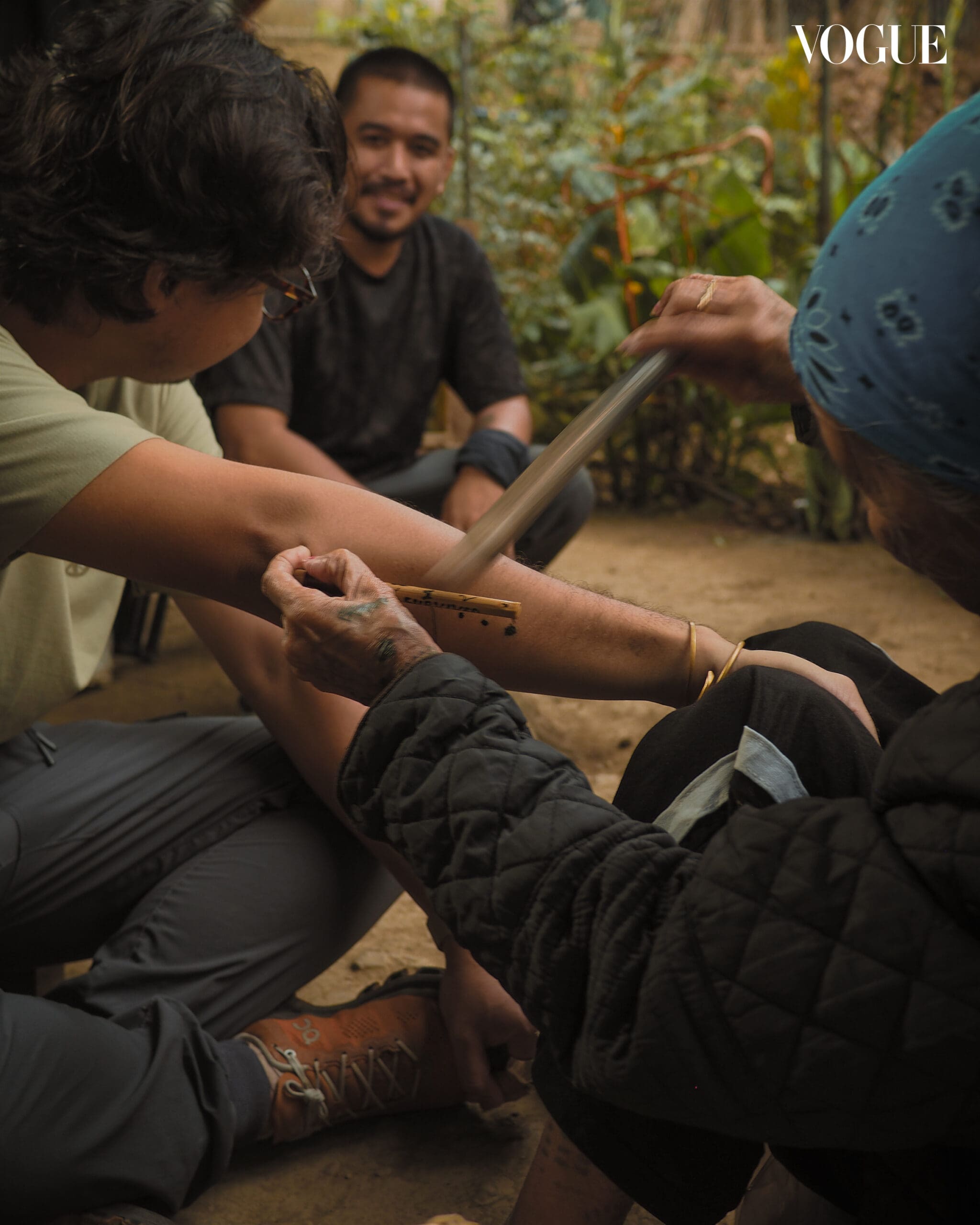
On a separate trip, other members of our team would go up Buscalan once again to better immerse themselves in the full, continuing story. Karen de Castro, our digital news writer, got the design of the sun and moon: “It represents the duality of life […] things that exist because of and in spite of the other. These are dualities which I relate to very much and feel is a part of my being.”
Looking at the tarpaulin enumerating the batok designs non-Butbut may get, we choose art whose meaning and context we each take time to inquire of yet essentially cannot be a part of. A helpful lens that one can use to read such a rich story is of the Butbut being an allegory for how a pre-colonial culture continues to evolve by adapting their traditions.
Most of us received the tattoo of three dots from Apo Whang-Od herself, the only design she practices these days, but one that carries a significant meaning of continuity as it represents her and her first two proteges, Grace and Elyang. Beyond the stated meaning of the three dots, Apo Whang-Od’s signature now possesses the undertold tale of indigenous power and what we can learn from them.
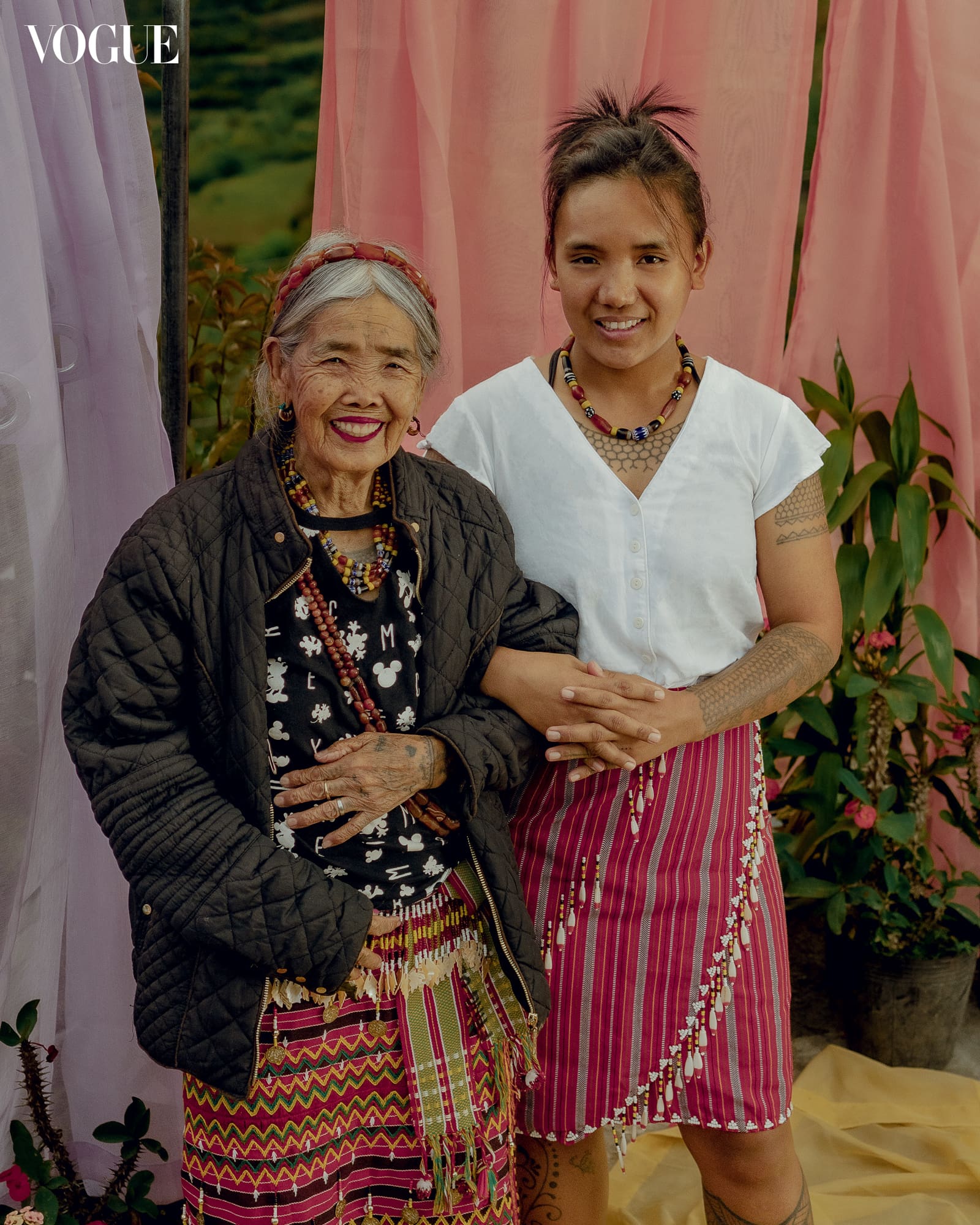
Photography by Artu Nepomuceno
